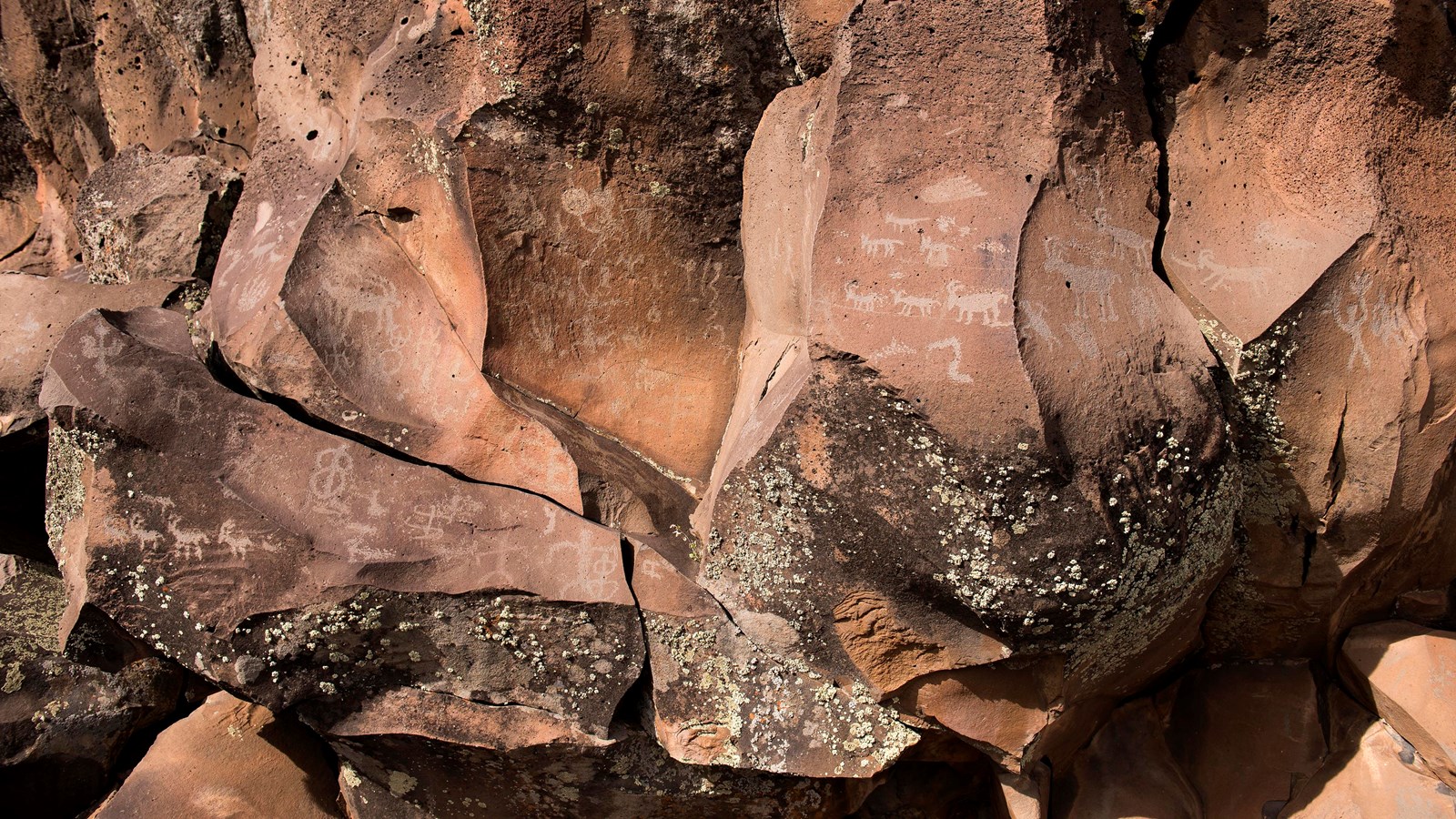Last updated: March 7, 2024
Place
Nampaweap

Information Kiosk/Bulletin Board, Parking - Auto, Toilet - Vault/Composting, Trailhead
Welcome to Nampaweap.
This location includes one of the largest petroglyph sites on the Arizona Strip. Inside the ravine, you walk on the rugged lava fields of the Uinkaret Plateau. Volcanism produced the cinders, cones and basalt flows that dominate the region. Beginning 150,000 years ago, seeping eruptions covered the ground. They formed multiple, thin beds of basalt. Slow cooling caused fractures that wind, water, and ice worked on resulting in huge chunks falling from the cliff. The scattering of boulders and the fragmented cliffs created perfect canvases for rock writing.
A pottery sherd embedded in a small chunk of basalt from the nearby Little Springs Eruption suggests that recent volcanic activity in this area occurred around A.C.E. 1050. The distinct style of the bowl dates the sherd, indicating the presence of people who witnessed and interacted with the blazing processes of geologic rebirth.
The Southern Paiute believe their Creator placed them on these lands, where they have lived in respectful balance since time immemorial. Religious specialists made petroglyphs in places full of power such as locations with important plants, rocks, or water. They documented events, histories, family stories, and perhaps their own vision quests, at Nampaweap. The recorder struck basalt with a hammer stone to peck away the dark, desert varnish. Hundreds of geometric designs, spirals, handprints, anthropomorphs (human-like figures) and zoomorphs (animal-like figures) grace the cliffs. Petroglyphs shed light on the world where the Old Ones lived. Stories of game kills, enemy attacks, marriages, family lives, and relationships with plants and animals remain as teaching tools for the elders who continue to take youths to visit petroglyphs to share history, culture and spiritual beliefs.
Nampaweap Canyon is an isolated location on the Arizona Strip and as such, precautions are needed to explore it. Water is not available here and heat radiates off the black basalt in the canyon, making even a short hike potentially dangerous. Balance plenty of water intake with salty snacks and remember that preparation is key: the nearest conveniences and medical services are approximately 3 hours away in Saint George, Utah or Fredonia, Arizona. Watch for rattlesnakes hiding in covered places.
Petroglyph sites are fragile. You can minimize your impact in the following ways:
- Don’t climb on the rocks. If you need to get a better look, use binoculars or a camera.
- Supervise children.
- Stay on established trails to protect native plants and preserve the surrounding environment.
- Please don’t touch petroglyphs. When people touch petroglyphs, they leave a residue of body oil on the surface of the rock. Over time, the oil causes images to fade and history is lost.
- Remember petroglyphs by photographing or sketching them, not by making rubbings or tracings.
- Respect the inhabitants of this land and their culture by leaving the landscape intact. It is illegal to remove rocks or cultural artifacts from a national monument.
- Pack out all trash and tissue papers, leaving Nampaweap Canyon as though you were never there.
Vandalism impacts many petroglyph sites throughout the Southwest, including Nampaweap Canyon. Increased public awareness of the value of petroglyphs is one of our best weapons against the destruction of these irreplaceable resources. You can help protect them by reporting any signs of vandalism or suspicious activity to a park ranger when you return to cell service:
Parashant Law Enforcement: (435) 688-3280
Archaeological Resources Protection Act Hotline: 1-800-227-7286 or 1-800-637-9152
